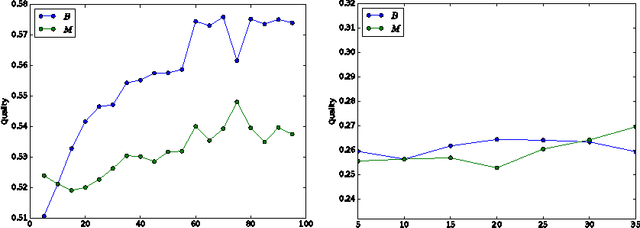A supervised approach to time scale detection in dynamic networks
Paper and Code
Feb 24, 2017



For any stream of time-stamped edges that form a dynamic network, an important choice is the aggregation granularity that an analyst uses to bin the data. Picking such a windowing of the data is often done by hand, or left up to the technology that is collecting the data. However, the choice can make a big difference in the properties of the dynamic network. This is the time scale detection problem. In previous work, this problem is often solved with a heuristic as an unsupervised task. As an unsupervised problem, it is difficult to measure how well a given algorithm performs. In addition, we show that the quality of the windowing is dependent on which task an analyst wants to perform on the network after windowing. Therefore the time scale detection problem should not be handled independently from the rest of the analysis of the network. We introduce a framework that tackles both of these issues: By measuring the performance of the time scale detection algorithm based on how well a given task is accomplished on the resulting network, we are for the first time able to directly compare different time scale detection algorithms to each other. Using this framework, we introduce time scale detection algorithms that take a supervised approach: they leverage ground truth on training data to find a good windowing of the test data. We compare the supervised approach to previous approaches and several baselines on real data.
 Add to Chrome
Add to Chrome Add to Firefox
Add to Firefox Add to Edge
Add to Edge